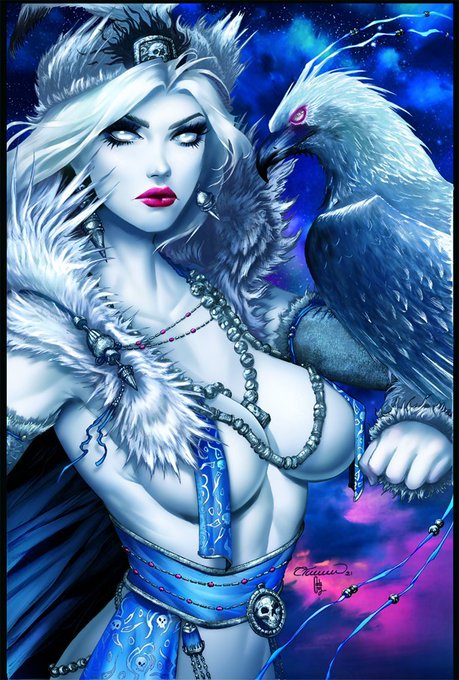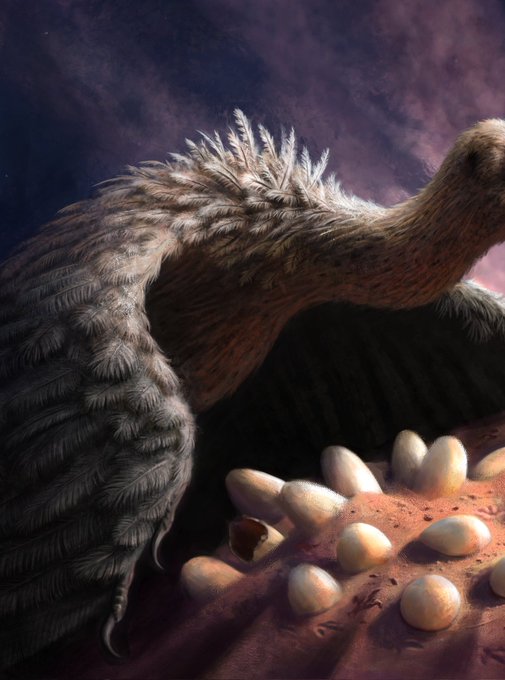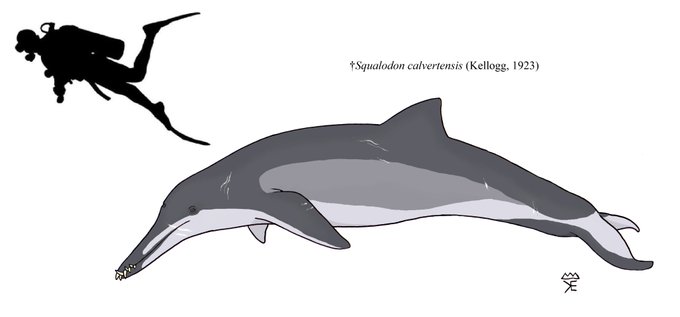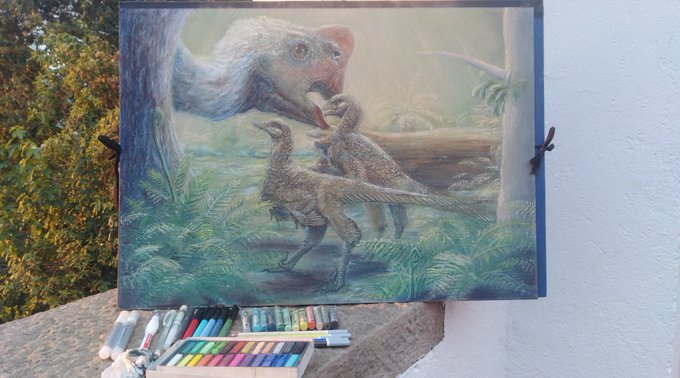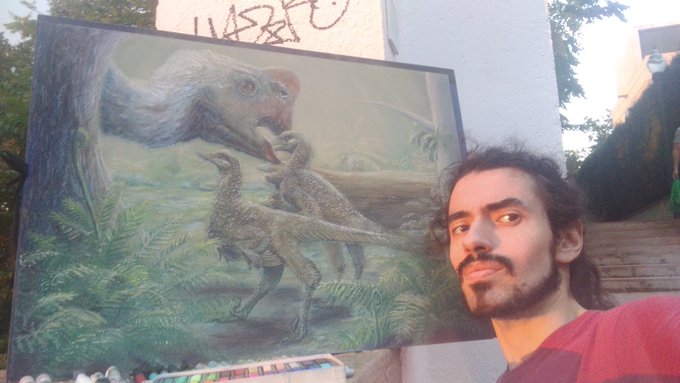Mongolia.のTwitterイラスト検索結果。 36 件
Risu as Shri rapax.
Shri rapax is a newly-described Velociraptorine dromaeosaur (a.k.a raptor) from the late Cretaceous Mongolia.
As the description implies, this raptor is closely related to the more popular Velociraptor, sharing the iconic enlarged sickle claws.
#iRISUtration
Wild Bactrian Camel
Distribution: northern China and southern Mongolia.
Conservation Status: Critically Endangered
Scientific Name: Camelus ferus
Romanised Name: Futako burakuda
Diet: Herbivore
Average Lifespan in the Wild: Unknown
Japanese Name: フタコブラクダ
Remains from Brazil are also tentatively referred to P. ambiguus, while P. kurochkini occured in whats now Mongolia. This species might actually even be its own genus.
New Zealand's Lake Manuherikia also boasted a species, P. aotearoa
📷Felipe Alves Elias & Tom Simpson
Saiga Antelope
Saiga Antelopes are found in three areas of central Asia with different populations: Russia (Kalmykia), Kazakhstan and Mongolia. They inhabit open dry steppes and semi-arid desserts, in flat areas with low-growing vegetation.
@Moth_Sprout @_velow i first saw them on Walking with Beasts and they're really cool! they're essentially carnivore ungulates (tho a fork of that tree i think involving entelodonts?) i believe only the upper half of a skull was found in mongolia. paleoart of them is either furred or hippolike 😍
While the cold air is moving towards Eastern Mediterranean,the hot air mass is also moving East towards Siberia and Mongolia.
Today temperature reached 30C again above 55N latitude at Ust Tarka and Tatarsk in Novosibirsk Oblast and at Pavlogradka,Omsk Oblast 54N among others.
Colours and inks from my cover contribution to @thecoffincomics Diabolical Harvest #1 kickstarter! With gorgeous colours by @cecidlcruz talking inspiration from the eagle hunters of Mongolia. Various options available over at https://t.co/GdBVi3thCG
Original art is sold.
I didn't realise that 50 people follow me now, thank you for the support.
Here's a new artwork, tried my best and I think it came out pretty well.
This is Nemegtomaia, an Oviraptorid from Late Cretaceous of Mongolia.
Also sorry for very few art uploads recently, life is hectic.
One of the stars of #PrehistoricPlanet, #Mononykus features in this diorama illustrating a scene from the Nemegt Formation in Cretaceous Mongolia.
Design by @StievenVdP
https://t.co/ClTyslRfFr
Bagaceratops, a small ceratopsian of late Cretaceous Mongolia. #DjadochtaJuly
Oviraptor philoceratops - though exclusive to the #JurassicWorld prologue, was infamously named the "egg thief" of Mongolia. Here we instead witness the first egg of this caring mother's clutch to hatch
Art in collaboration with friend and paleoartist @Paleoartologist 🎨
The Udanoceratops was a large, ceratopsian herbivore that did not sport any horns on its head. Fossils of this dinosaur have been found in Mongolia. Part of my #100dayproject
I've got this in my woodpecker stamp collection, too. Wryneck from Mongolia.
• Egypt becomes a sovereign state.
• The Velociraptor is discovered in a mega-fossil find in Mongolia.
• Albert Einstein’s “The Meaning of Relativity” is published - becomes a physics classic forever.
• Ghandi is arrested in Bombay for sedition.
#2022NewYear
Pastel Paleotober Day 27: Citipati 💙
Citipati lived in the late Cretaceous desert of Mongolia. One Citipati was fossilized with its arms spread over its nest, trying to protect its eggs from a collapsing sand dune and providing evidence of parenting behavior in non-avian dinos
A pair of Paleoart reconstructions: Telmasaurus and Squalodon.
Telmasaurus was a medium sized basal Varanoid (a stem-Monitor lizard if you will) from the Late Cretaceous Flaming Cliffs of Mongolia. Squalodon is a macropredatory Platanistoid whale from the Oligocene and Miocene.
Mongolia. (TW: Eyestrain)
Found this DTIYS long time ago and I wanted to do it, did it pretty simple and quick tho haha. I can't find the post anymore so if you know the artist please let me know so I can tag them
#countryhumans #countryhumansmongolia
Hypothetical nest parasitism which could be represented for the discovery of 2 perinatal Byronosaurus jaffei (IGM 100/972; IGM 100/974) in a nest with oviraptorid eggs, inthe Late Cretaceous "Flaming Cliffs" of the Djadochta Formation, Mongolia.
#paleoart #FossilFriday #sciart
Dino Fact:
Nomingia is an Oviraptorid from Late Cretaceous Mongolia. Its tail vertebrae were fused into a pygostyle like birds. It's where tail flight feathers are attached in birds. For Nomingia, it'd be for a fan of feathers to display to others of its kind.
Art: Sydney Mohr
Mother's Day Dino Fact!
Oviraptor (Egg Thief) is an Oviraptorid from Late Cretaceous Mongolia. It was named this since one was found near a "Protoceratops nest". Turns out it was really an Oviraptor nest and the Oviraptor was just a mother protecting her eggs.
Art: IsisMasshiro















